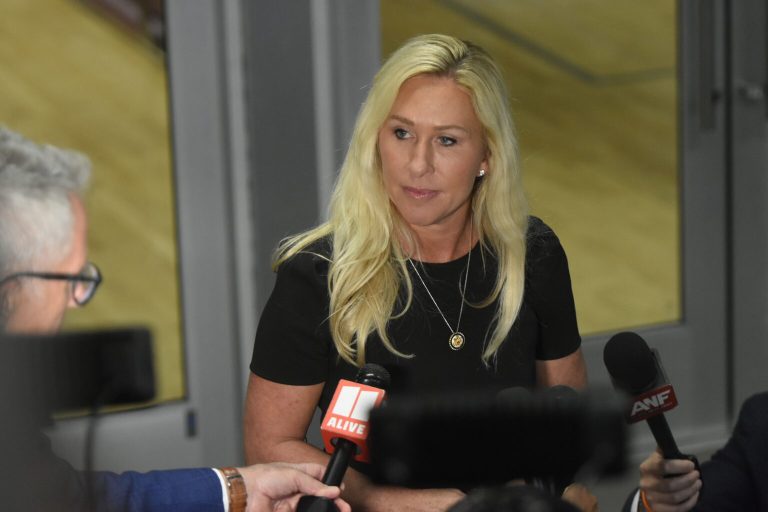America’s industrial heartlands are facing another blow as a long-standing factory abruptly closed its doors, leaving hundreds of workers without jobs. The facility, operational for 60 years, was once a cornerstone of the local economy and a workplace spanning generations of families. Its sudden shutdown underscores the challenges facing manufacturing and consumer goods sectors in a shifting economic landscape.
The closure occurred on November 4 at a major snack production plant, which produced and shipped some of the country’s most recognizable products. According to federal Worker Adjustment and Retraining Notification (WARN) notices, 422 employees were laid off immediately when the plant ceased operations. An additional 46 staff members are expected to lose their positions next May when a nearby warehouse that supported the plant also stops trading.
The facility had a rich history in its region. For decades, it was more than just a place of employment — it was a source of community and stability. Generations of families lived near the factory and often passed down roles from parents to children. Many employees developed specialized skills unique to this production site, making the layoffs not just an economic blow but also a disruption of long-standing vocational traditions.
The company behind the plant, PepsiCo, which also produces popular brands like Lays, Tostitos, Cheetos, and Pop Corners, cited declining domestic sales as the driving force behind the shutdown. Across North America, fewer consumers are purchasing its products, forcing management to restructure operations and reduce costs. The company reported a 2 percent drop in sales during the third quarter of 2025, attributing the decline to changing consumer preferences, increased competition, and shifting dietary habits.
“This action was driven by business needs,” company representatives said in a statement. “We are committed to treating every impacted employee with care, providing transition assistance, career support, and continued pay and benefits during this time.”
For the local workforce, the closure has been devastating. Many employees had devoted decades to the company, and some had entire family histories intertwined with the factory’s operations. Beyond the immediate financial impact, the shutdown has left a void in the community — a reminder of how corporate decisions can ripple far beyond the balance sheet.
This event is part of a broader trend of job reductions in some of America’s largest companies. From manufacturing to tech and consumer goods, businesses are reassessing operations to adapt to changing markets. Rising automation, shifts in consumer behavior, and global competition have placed additional pressures on companies, prompting closures and restructuring that often hit long-standing employees hardest.
The ripple effects of such closures are profound. Workers face not only immediate income loss but also uncertainty about future employment opportunities, especially for those with specialized skills tied to a particular facility. Local economies, too, feel the impact, as reduced spending affects nearby businesses and services. Schools, transportation, and social programs in the area can experience indirect consequences as families adjust to reduced household incomes.
In response to these challenges, government agencies and community organizations often step in to support displaced workers. Workforce retraining programs, job placement services, and temporary financial assistance are available in some regions to help ease transitions. However, the suddenness of plant closures can make even well-designed support programs difficult to implement effectively, leaving workers scrambling to navigate the next steps in their careers.
For the company, the decision to shutter a decades-old plant reflects the broader realities of modern business strategy. Maintaining aging facilities, managing operational costs, and responding to declining demand require difficult choices. By consolidating operations or moving production to more efficient locations, corporations aim to remain competitive in an increasingly globalized market. Nevertheless, these decisions carry real human costs, as seen in the hundreds of layoffs at this historic factory.
Labor advocates have highlighted the social responsibility of corporations in such situations, emphasizing that long-term employees and communities deserve fair treatment and support. Providing severance, extended benefits, retraining opportunities, and transparent communication are essential components of responsible corporate conduct. While the company involved has pledged to assist affected workers, many employees still face the emotional toll of sudden unemployment and the challenge of adjusting to an uncertain future.
The closure also raises questions about consumer habits and their role in shaping corporate decisions. Changes in dietary trends, growing health consciousness, and competition from alternative snack products have contributed to declining sales. This dynamic illustrates how individual choices, when aggregated, can have far-reaching consequences for employment and community stability.
Despite these challenges, there are opportunities for renewal and adaptation. Some displaced workers may find new employment in emerging sectors, leverage skills gained at the plant in other industries, or pursue entrepreneurship. Community initiatives and government programs can help facilitate these transitions, although success often depends on proactive planning, support networks, and access to training resources.
For the families affected, the shutdown is both a financial and emotional turning point. Many employees had envisioned long careers at the plant, and the closure marks an abrupt end to decades of service. Beyond paychecks, workers have lost social connections, mentorship roles, and a sense of identity tied to their work. Communities built around the factory will need to find new ways to maintain cohesion and support one another as they navigate this change.
The broader economic context underscores the vulnerability of even long-established companies to market fluctuations. Declining sales in core markets, shifts in consumer behavior, and competitive pressures can prompt rapid strategic decisions that reverberate through local communities. While the closure reflects a business rationale, it also serves as a cautionary tale about the intersection of corporate priorities, workforce stability, and community well-being.
As the dust settles, the stories of individual workers provide a human face to these large-scale economic shifts. Many employees are exploring career retraining, new job opportunities, or relocation, while others rely on community and family support to weather the transition. Their experiences highlight the resilience of workers in the face of sudden adversity, as well as the importance of comprehensive support systems to mitigate the impact of corporate restructuring.
In conclusion, the abrupt closure of this six-decade-old factory demonstrates the complex interplay between corporate strategy, consumer behavior, and workforce stability. Hundreds of workers now face an uncertain future, while communities must adapt to the loss of a longstanding economic anchor. The event serves as a reminder that behind every business decision are human lives affected by the shifting tides of industry and market demand. For those impacted, the challenge lies not only in finding new employment but also in preserving the dignity, identity, and community bonds that were cultivated over generations.

Emily Johnson is a critically acclaimed essayist and novelist known for her thought-provoking works centered on feminism, women’s rights, and modern relationships. Born and raised in Portland, Oregon, Emily grew up with a deep love of books, often spending her afternoons at her local library. She went on to study literature and gender studies at UCLA, where she became deeply involved in activism and began publishing essays in campus journals. Her debut essay collection, Voices Unbound, struck a chord with readers nationwide for its fearless exploration of gender dynamics, identity, and the challenges faced by women in contemporary society. Emily later transitioned into fiction, writing novels that balance compelling storytelling with social commentary. Her protagonists are often strong, multidimensional women navigating love, ambition, and the struggles of everyday life, making her a favorite among readers who crave authentic, relatable narratives. Critics praise her ability to merge personal intimacy with universal themes. Off the page, Emily is an advocate for women in publishing, leading workshops that encourage young female writers to embrace their voices. She lives in Seattle with her partner and two rescue cats, where she continues to write, teach, and inspire a new generation of storytellers.









